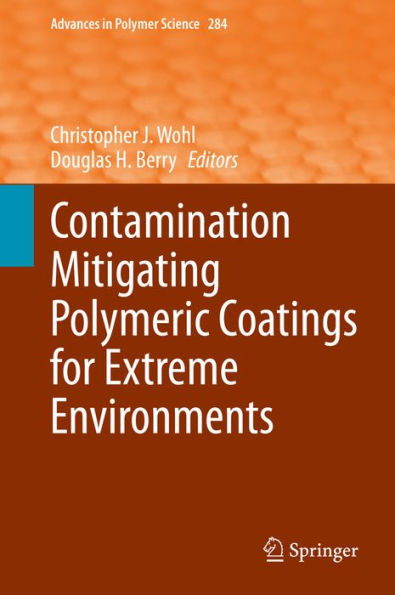This volume provides perspectives on the approaches, mechanisms, test methods, durability considerations, and environmental concerns for contamination mitigating coatings and polymers with emphasis on their use in more extreme aerospace and marine terrestrial environments. Parts of the Volume are devoted to application of biomimetics to contamination mitigation polymeric coatings, low ice adhesion surfaces, insect residue adhesion resistance coatings, and marine biofouling mitigation materials. By juxtaposing ice insect, and marine mitigation approaches, researchers and users may more easily identify threads of similarity that will assist in future developments and potential applications in these areas. The volume is of interest to chemists and material scientists in providing awareness of both the need for efficacy in mitigating contamination and for appropriate coating durability; to physicists in providing better understanding of the interaction between the contaminant, the coated surface, and the surrounding environment; and to engineers in describing the need for better scale-up tests between laboratory and field environments.
This volume provides perspectives on the approaches, mechanisms, test methods, durability considerations, and environmental concerns for contamination mitigating coatings and polymers with emphasis on their use in more extreme aerospace and marine terrestrial environments. Parts of the Volume are devoted to application of biomimetics to contamination mitigation polymeric coatings, low ice adhesion surfaces, insect residue adhesion resistance coatings, and marine biofouling mitigation materials. By juxtaposing ice insect, and marine mitigation approaches, researchers and users may more easily identify threads of similarity that will assist in future developments and potential applications in these areas. The volume is of interest to chemists and material scientists in providing awareness of both the need for efficacy in mitigating contamination and for appropriate coating durability; to physicists in providing better understanding of the interaction between the contaminant, the coated surface, and the surrounding environment; and to engineers in describing the need for better scale-up tests between laboratory and field environments.

Contamination Mitigating Polymeric Coatings for Extreme Environments

Contamination Mitigating Polymeric Coatings for Extreme Environments
eBook (1st ed. 2019)
Related collections and offers

Product Details
| ISBN-13: | 9783030458393 |
|---|---|
| Publisher: | Springer-Verlag New York, LLC |
| Publication date: | 05/15/2020 |
| Series: | Advances in Polymer Science , #284 |
| Sold by: | Barnes & Noble |
| Format: | eBook |
| File size: | 66 MB |
| Note: | This product may take a few minutes to download. |
